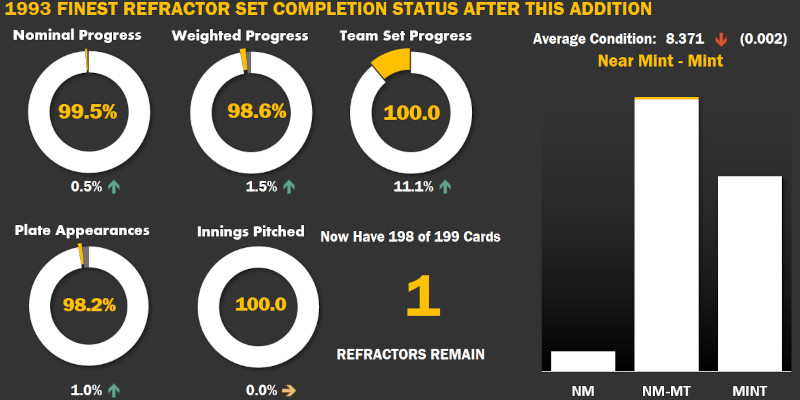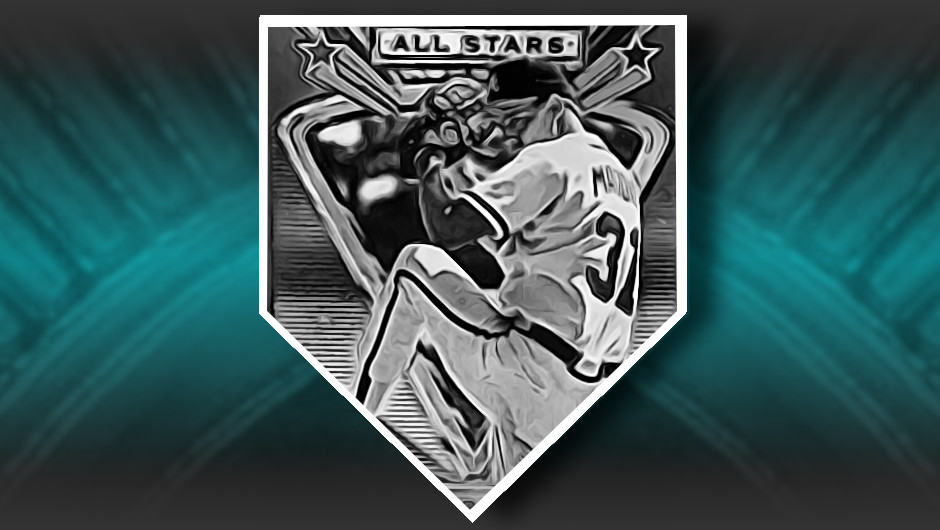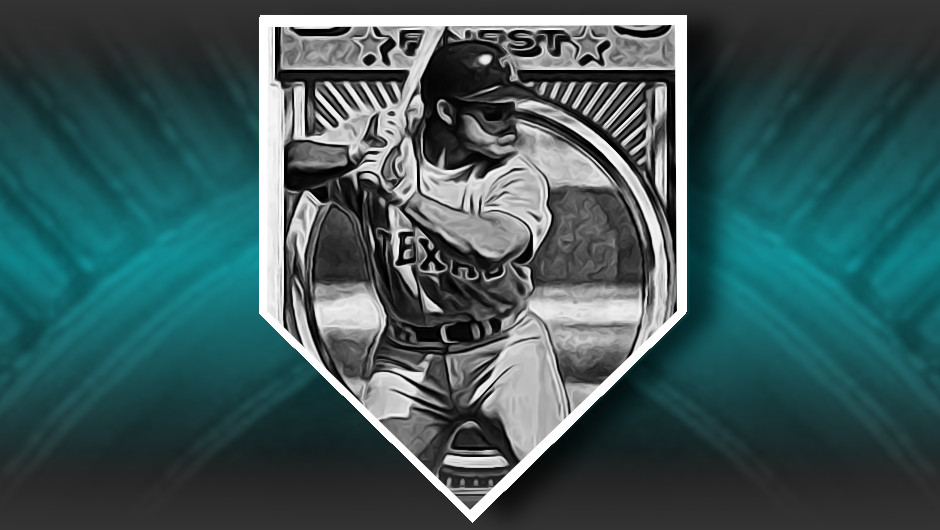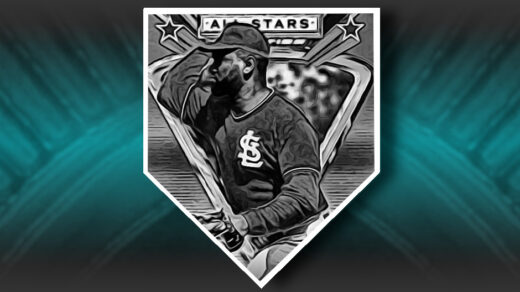Almost four years ago, on my 40th birthday weekend no less, I attended a baseball card show in a hotel ballroom. I browsed every booth in that Richmond, Virginia show, and ultimately asked anyone displaying baseball cards dating from my lifetime if they had any 1993 Finest Refractors. The answer was a nearly uniform one word response: No. I emphasize the term “nearly.” One guy caught me off guard when he looked me dead in the eye and said, “I don’t carry any vintage.”
“Really?” I thought. We’re the same age and you’re calling these shiny cards vintage? They practically invented the modern era. I thought about his non-vintage inventory remark all the way home, and as I eventually realized, he had a point. 1993 Finest is to some degree a vintage set. It had been over a decade since anyone took up bat and glove in a checklist that was initially filled in its entirety with stars and recent rookie of the year candidates.
Some time after this exchange I laid out all 199 names appearing in the 1993 Finest checklist. I had 192 remaining after crossing off the ones that left the playing field at the end of the ’93 season: Nolan Ryan, George Brett, Robin Yount, George Bell, Ivan Calderon, Glenn Davis, and Carlton Fisk. The abbreviated 1994 season brought the retirements of Bob Welch, Orestes Destrade, Jose Guzman, Kent Hrbek, and Bo Jackson. The trend continued with another dozen in 1995 and by 2001 more than half the set could be classified as retired. Ten years later in 2011 there was only one active player left crossing the foul lines on his way to work each morning.
The last player from ’93 Finest to appear in a Major League ballgame was Ivan Rodriguez, who hung up his catcher’s mitt after hitting a single, scoring a run, and catching a full game for Stephen Strasburg and four residents of the Washington Nationals’ bullpen. This capped off a career that saw him serve two consecutive seasons as MLB’s youngest player and log more than 300 home runs and just shy of 3,000 hits. Despite the impressive offensive totals, “Pudge” was one of the better long-tenured defensive catchers in the history of the game. He blew past the record for career games behind the plate previously held by Carlton Fisk (coincidentally also known as “Pudge”). His career caught-stealing rate is 46%, the highest among players that have complete data (i.e. 1969-present) available.
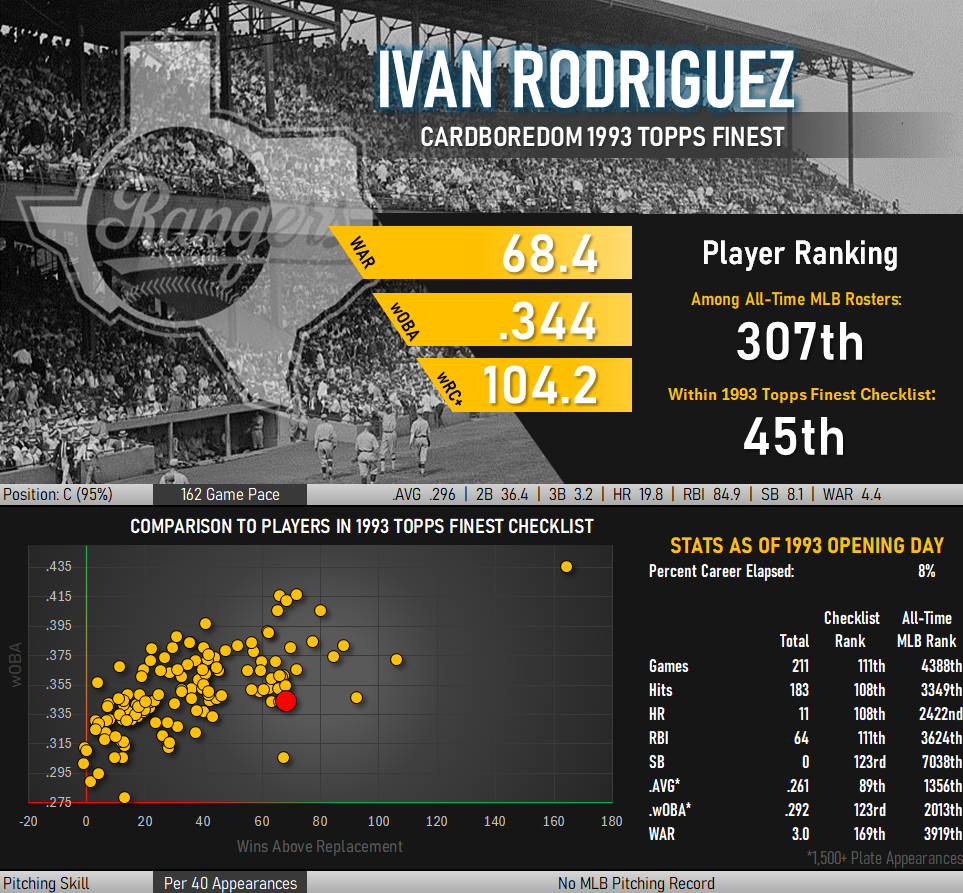
My offense-focused player rankings have Ivan “Pudge” Rodriguez ranked just outside of the top 300 players of all time and the 11th best backstop in the history of the game. Very few catchers ever get to this sort of level, and within the ’93 Finest checklist only Fisk surpasses him.
An Out of the Blue Inquiry From Couer D’Alene
Finding a long sought after card is like striking gold. It therefore follows that the path bringing Ivan Rodriguez to my collection ran through the mining veins surrounding Coeur D’Alene, Idaho. Here’s where it gets interesting.
A collector posted a question to one of the card forums, asking for help comping a card received as part of a large purchase at his local card shop. This had apparently been a fairly hefty transaction, as the card shop threw in a handful of upper tier ’90s inserts to even out the deal. Among these cards was an ungraded Ivan Rodriguez 1993 Finest Refractor. Common cards can be had for $10-$30 and second tier Hall of Famers for around $100, so a similar value was seemingly assumed to be where this card would land in terms of evening out the trade. Returning home, the collector found reports of several recently completed sales and wanted forum readers to tell him if this card was truly selling with regularity for four-figure prices.
Within minutes I was typing out a lengthy direct message filling him in on the history of the card and putting my name out there in case he would be looking to dispose of it. I traced how the card typically sold for a couple hundred bucks until the late 2010s. There were a few eyewatering datapoints along the way, though these appeared to be more closely tied to condition rarities among slabbed examples. After being fairly attainable for a few decades, recent years have seen the available supply of the Rodriguez card dry up just when demand for this set rebounded. Add in rumors of a collector hoarding this particular card and the result was reinvigorated pricing, putting Rodriguez on par with those of the biggest names in the checklist. The collector’s eyes were not deceiving him. He had stumbled upon one of the three most valuable cards in the set.
I concluded my message with an unsolicited offer to purchase or trade for his Rodriguez card. I recommended he first have it graded by PSA. A high grade would undoubtedly be rewarded by the market if he were looking to sell and I suggested he would gain a far higher price than what I could provide if indeed the card could garner a mint designation. However, if it should return with a grade less than that I thought there might be room for us to work something out. The seller thanked me for the information and elected to go the graded route. I wished him luck with his cardboard windfall and we parted ways.
Duplicates and Data
I tried to keep my infodump of a message to the collector somewhat manageable. Underpinning my notes on this set is a ton of information, sometimes coherent and other times in bits and pieces across scattered files. The core of this data resides in an archive of recorded transaction histories dating back to 2005 and close to 200 Rodriguez transactions within those records. I also have notes on a few refractor hoards.
The messages going back and forth with the collector in Idaho touched a bit on the collection of Phil Gold. He was one of the better known accumulators of ’93 Finest Refractors and to my knowledge assembled the second largest collection with more than 3,000 examples from the set. Gold focused on quantity over quality of names, preferring to snap up multiple copies of common players rather than exhaust a collecting budget on one or two superstars. He managed to gather together more than 100 copies of several cards in the set and would brag about his activities single-handedly causing Beckett to identify at least one of these as being one of the set’s notorious short-prints. When Gold passed away in 2017, his last shared accounting of his collection showed just two copies of Rodriguez among his refractors.
The best known refractor hoarder was therefore not involved with any shortage of the Rodriguez card, though this isn’t to say there isn’t someone with more than just a handful of duplicates lying around. Rumors have persisted about another collector snapping up Rodriguez Refractors. Like a lot of talk about hoarded cards, I have not seen definitive proof of this card being hoarded or heard from the person supposedly behind this activity. However, there are some hints among what is known that support some level of accumulation having taken place with the card.
For starters, the ’93 Finest Ivan Rodriguez has gone from being one of the least graded refractors to one of the most graded names in the checklist over the past few years. Most refractors have already been slabbed, but this one showed a dramatic increase of more than 80 newly graded examples in 2024. While high prices tend to bring out more cards to be slabbed, this typically plays out over time with cards arriving one piecemeal. Almost all of the newly graded cards seemed to show up inside a single 3-month period, making it far more likely one entity submitted a massive number of Rodriguez cards at once.
[Side note: Are you the collector with dozens of Ivan Rodriguez refractors? I’d love to hear about what accumulating so many refractors has been like. See my contact information here.]
There is also the card’s transaction history to consider. While these records do not reveal why availability and prices have shifted, they can identify trends. The trend for this particular card has been one of increasing scarcity over the past 10 years.
Two decades ago, when Rodriguez was still an active player, his refractors were easy enough to find. Up through his 2011 retirement the card changed hands more than once per month on average, a rate 14% more frequent than the average refractor. Outside of one or two outliers driven by the sale of slabbed Gem Mint examples, the typical Rodriguez refractor sold for less than $150, a level ~2.3x that of the average name in the checklist and about 2x-3x the going rate for Carlton Fisk, his closest analog behind the plate.
From 2012-onward, prices for Rodriguez cards began outpacing the movement of the typical refractor, even though the number of Rodriguez transactions stayed somewhat in line with historic trends for several years. The ratio of Rodriguez transactions to the rest of the checklist began falling in earnest in 2017 and has yet to recover to anything approaching that of a “normal” refractor. With fewer Rodriguez cards coming to market, the premium collectors have been willing to pay has been rising. The Rangers’ backstop has seen his refractor outsell Carlton Fisk in terms of price by anywhere from 15:1 to 40:1 since 2017.
There are plenty of Rodriguez Refractors out there, the problem is finding one that somebody is willing to part with.
Direct Messages (Part Two)
About a year after our initial conversation I received an unexpected message from the owner of the Rodriguez Refractor. He was planning to travel to a major card show and was hoping to come back with a major acquisition for his collection and was selling non-core cards to fund this hunt. He had listed his refractor on eBay at an optimistic price level and found no takers. He wanted to know if I was still interested in the Rodriguez card and inquired about putting together a deal.
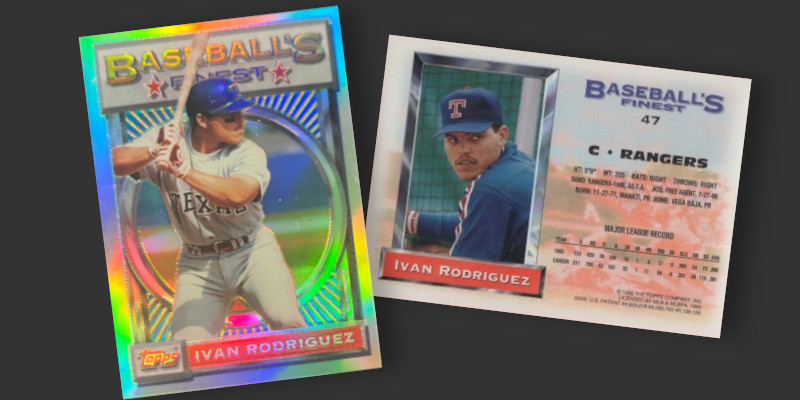
Of course I was interested. Since I last saw it, the card had been moved to an SGC slab where its centering and few minor surface issues garnered a NM-MT 8 rating. We went back and forth a bit and settled on a mutually agreeable price. I now had my card and a collector in Idaho had turned a throw-in from an LCS into something potentially stunning at a far-off card show.
I’m very happy to have finally nailed down this tough addition to my set building project. After telling the story of why this particular card is so sought after and the unique way it found its way to my collection, I don’t really have much more to say about this particular piece of cardboard. However, that doesn’t mean the story is over. After all, the collector who sent it to me only let go of it in order to add something even more impressive to his collection.
Shortly after I received my card, the collector flew to the Dallas Card Show. I kept tabs on a few social media posts to see what he picked up and saw a dozen or so highlights join his collection. There were high grade Topps Chrome Ichiro and Pujols rookies, a numbered autographed Juan Soto rookie, an Ozzie Smith rookie, an early Heritage Mike Trout, a trio of shiny Griffey ’90s inserts, a Carl Yastrzemski auto, and a PSA 5 Johnny Bench rookie. All of these are great looking cards, but the next one is the card I tell myself was made possible by the Pudge Refractor:
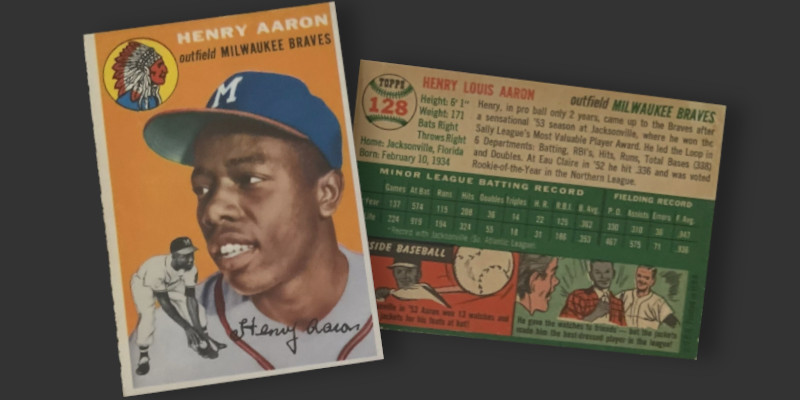
This guy flew back home with one of the better looking VG condition Hank Aaron rookies that I have seen. My card contributed less than half of the Aaron’s purchase price, but I like to think the purchase helped make this happen for what appears to be a very impressive collection.
(Almost) My Last Refractor
A Pudge Rodriguez refractor would have fit nicely into the story arc of the set I was building. Having the last card I needed be the last guy from the set to also hang up his spikes would have lent itself well to some sort of storytelling theme.
The graphic below indicates that is not how this quest ends. One card remains, a name that I ever so briefly thought I had acquired only to have the eBay seller back out of the transaction and list it again at a higher price. I’ll be back soon to write the final chapter of this set building project, one that actually starts with me writing a letter back in elementary school. Stay tuned…it takes a moment to get my vintage mind up to speed.
